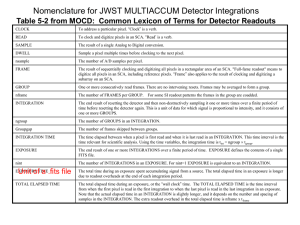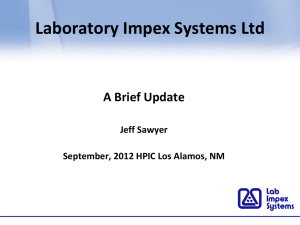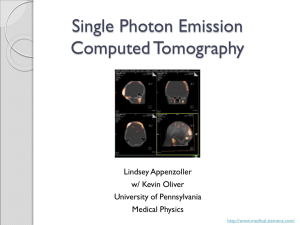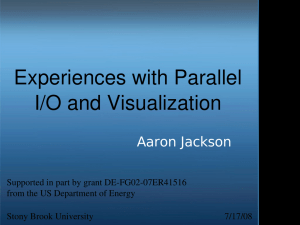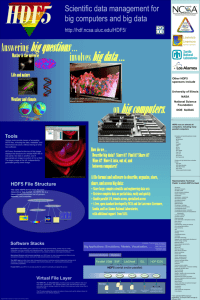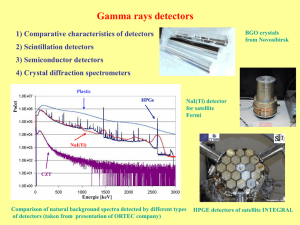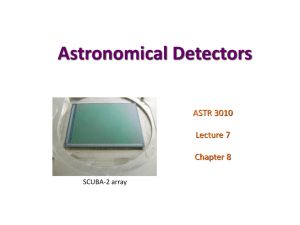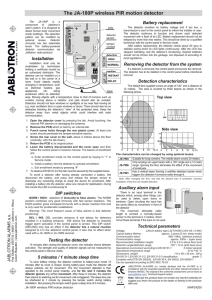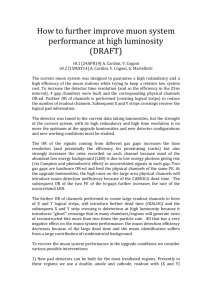Integrating high speed detectors at Diamond
advertisement
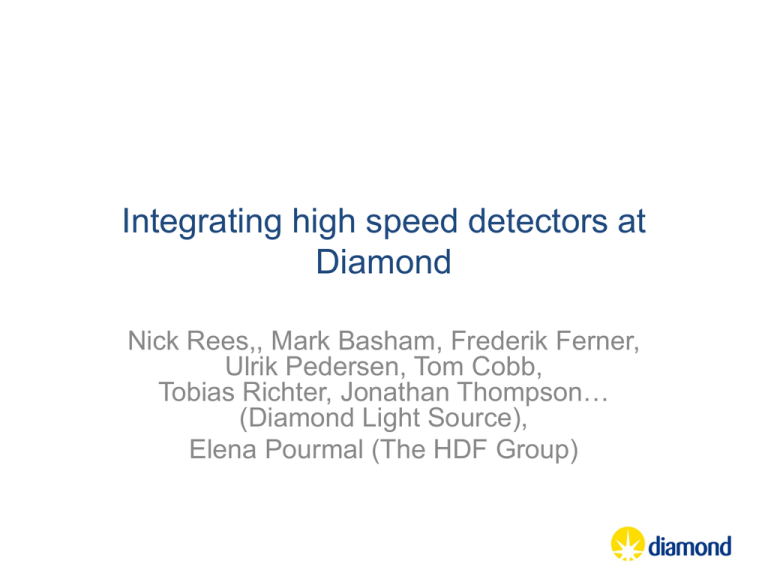
Integrating high speed detectors at Diamond Nick Rees,, Mark Basham, Frederik Ferner, Ulrik Pedersen, Tom Cobb, Tobias Richter, Jonathan Thompson… (Diamond Light Source), Elena Pourmal (The HDF Group) Introduction • History • Detector developments – Parallel detectors – Spectroscopic detectors • HDF5 developments – HDF5 1.8.11 (Available now): • Dynamically loaded filter libraries • Direct write of compressed chunks – HDF5 1.10 (Being integrated): • • • • New dataset indexing: Extensible array indexing. SWMR VDS Journaling History • Early 2007: • • • Peak Detector Performance (MB/s) – Diamond first user. 10000 – No detector faster than ~10 MB/sec. 1000 Early 2009: – first Lustre system (DDN S2A9900) 100 – first Pilatus 6M system @ 60 MB/s. Early 2011: 10 – second Lustre system (DDN SFA10K) – first 25Hz Pilatus 6M system @150 MB/s. 1 2007 Early 2013: 2009 2011 2013 – first GPFS system (DDN SFA12K) – First 100 Hz Pilatus 6M system @ 600 MB/sec – ~10 beamlines with 10 GbE detectors (mainly Pilatus and PCO Edge). • Late 2015: – delivery of Percival detector (6000 MB/sec). 2015 DETECTOR DEVELOPMENTS Diamond Detector Model Potential EPICS Version 4 Model Basic Parallel Detector Design Control Process Sensor/Medipix3 Hybrids Detector head FEM Readout Node FEM Readout Node FEM Readout Node FEM Readout Node FEM Readout Node FEM Readout Node Network 10GigE Optical Links • Readout nodes all write in parallel • Need a mechanism to splice data into one file. Detector Block Diagram Detector Control Detector Array Detector Wire Protocols Control Driver Configuration HDF5 file Cmd Data Receiver Status Control Server Data Processing: • • • • • • • 2 bit gain handling DCS subtraction Pixel re-arrangement Rate correction(?) Flat field Dark subtraction Efficiency correction Detector API Data Compression EPICS/ Area Detector Tango/ Lima Calibration Software HDF5 File Writer HDF5 file Actual/potential network or CPU socket boundaries Detector Control Software Detector Data Stream (n copies) Documented Controlled Interfaces Beamline Control Software Detector Engineer Software Spectroscopic Detectors • areaDetector is poorly named… – Base class is asynNDArrayDriver, but this name is not so catchy… • NDArray* classes provide basic functionality • Core plugins derive from NDPluginDriver and many will work with any NDArray. • Most popular plugins are the file writing plugins that get data to disk. – Basic areaDetector class is really NDDriver • Provides methods for reading out a typical areaDetector • The methods aren’t so good for other types of detectors, e.g.: – Spectroscopic (MCA like) detectors. – Analogue (A/D like) detectors. Proposal for new ND Drivers • Need a set of basic driver classes for other types of NDArrays – NDMCADriver (or NDSpectraDriver) • Generates 2-D array of energy vs detector channel • 3rd dimension can be time. – NDADCDriver (or ND DigitizerDriver) • Generates 1D array of values from a set of ADC’s • 2nd dimension can be time. • Each driver can feed existing plugins, but also could benefit from specialist plugins. HDF5 DEVELOPMENTS HDF5 key points • HDF5 is mature software that grew up in the HPC environment. • It is a widely used standard and has the richest set of high performance functionality of any file format. • It allows rich metadata and flexible data formats • It has some caveats we know about: – HDF5 is single threaded. – pHDF5 relies on MPI, which doesn’t happily co-exist with highly threaded architectures like EPICS. – pHDF5 is not as efficient as HDF5 – pHDF5 doesn’t allow compression. – Files cannot be read while they are written Recent Developments: Release 1.8.11 • H5DO_write_chunk – Funded by Dectris and PSI – Improves writing compressed data by: • Avoiding double copy of filter pipeline • Allowing optimised (e.g. multithreaded) compression implementations • Pluggable filters – Funded by DESY – Allows users to provide filters as a shared library that is loaded at runtime. – Search path set by environment variable: HDF5_PLUGIN_PATH Chunk write mechanism Current developments: Release 1.10 • File format changes that need a major release: – Improved dataset indexing: • New B-Tree implementation • Extensible array indexing – Journaling – Virtual Object Layer – Single Writer Multiple Reader (SWMR) • Funded by Diamond, Dectris and ESRF – Virtual Data Set • Funded by Diamond, DESY and Percival Detector • Beta release July 2015 Thank you for your attention…

